Abstract
In this paper, we develop a theory for viscoelastic behavior of large membrane deformations and apply the analysis to the relaxation of projections produced by small micropipette aspiration of red cell discocytes. We show that this relaxation is dominated by the membrane viscosity and that the cytoplasmic and extracellular fluid flow have negligible influence on the relaxation time and can be neglected. From preliminary data, we estimate the total membrane "viscosity" when the membrane material behaves in an elastic solid manner. The total membrane viscosity is calculated to be 10(-3) dyn-s/cm, which is a surface viscosity that is about three orders of magnitude greater than the surface viscosity of lipid membrane components (as determined by "fluidity" measurements). It is apparent that the lipid bilayer contributes little to the fluid dynamic behavior of the whole plasma membrane and that a structural matrix dominates the viscous dissipation. However, we show that viscous flow in the membrane is not responsible for the temporal dependence of the isotropic membrane tension required to produce lysis and that the previous estimates of Rand, Katchalsky, et al., for "viscosity" are six to eight orders of magnitude too large.
Full text
PDF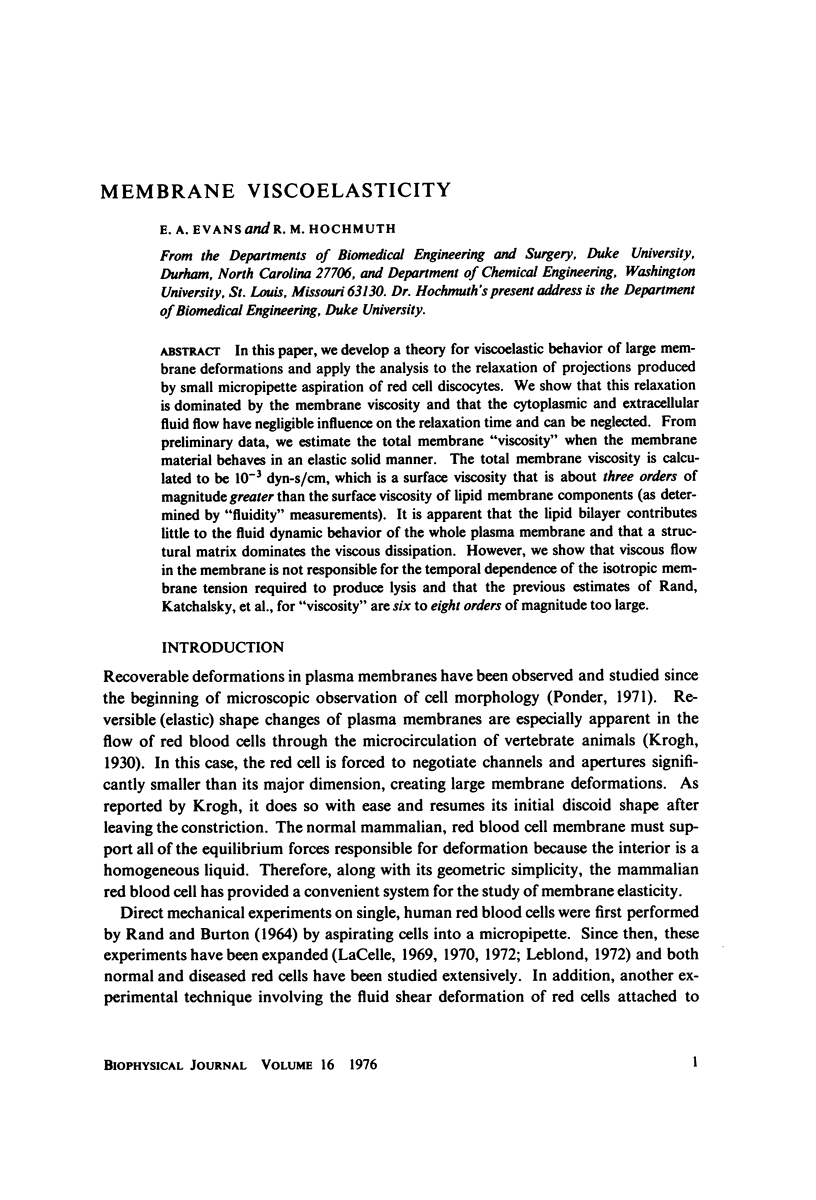
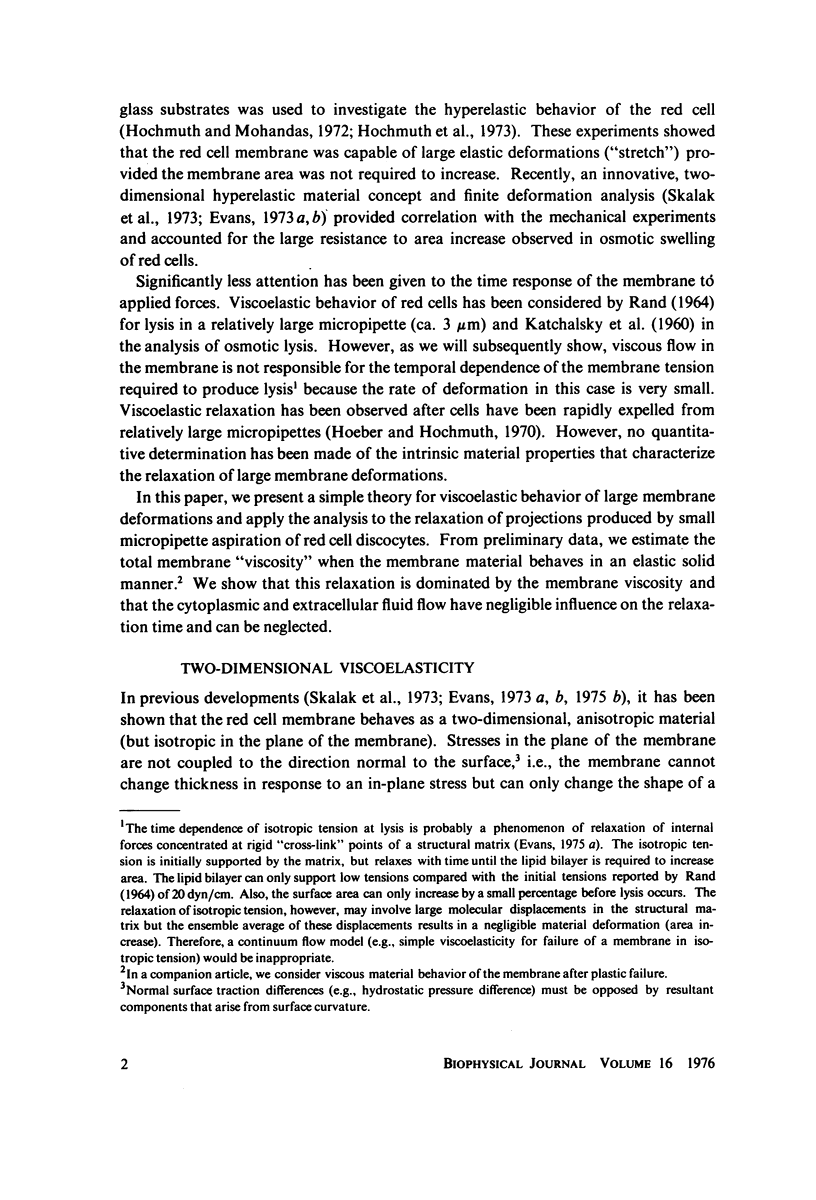
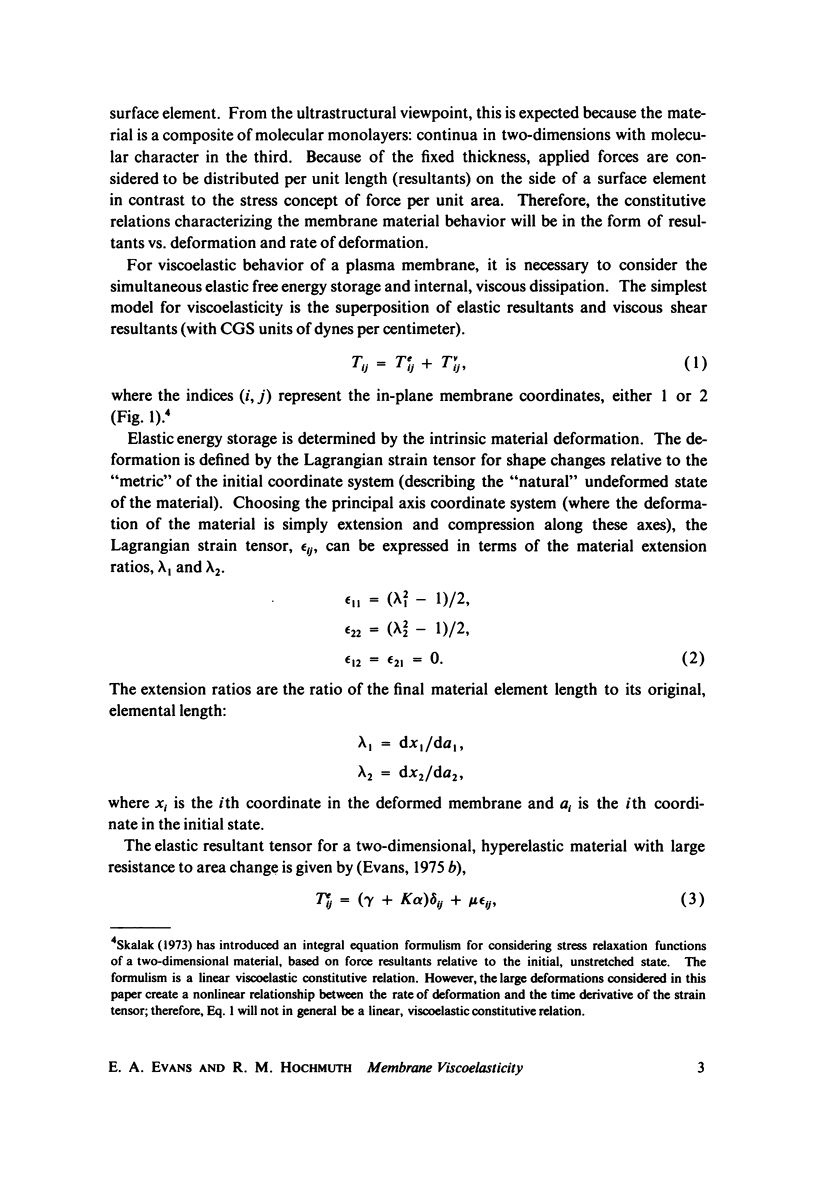
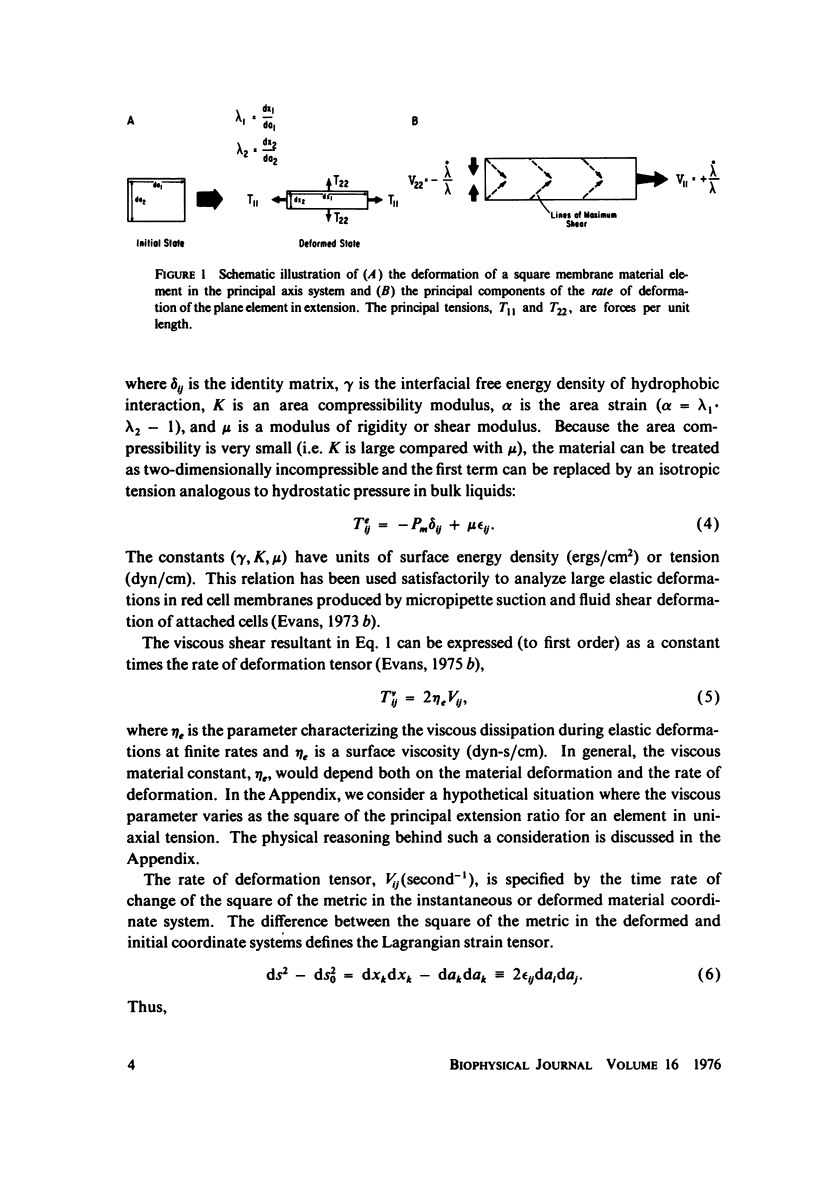
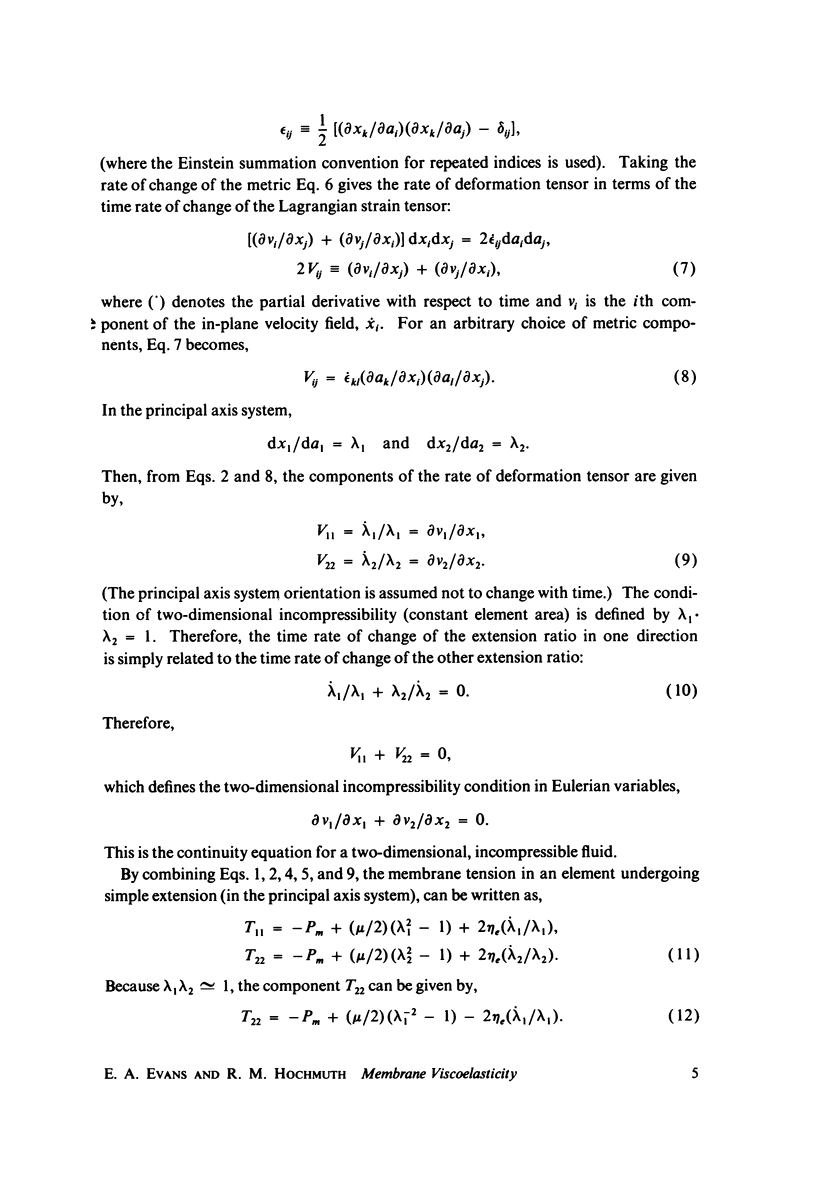
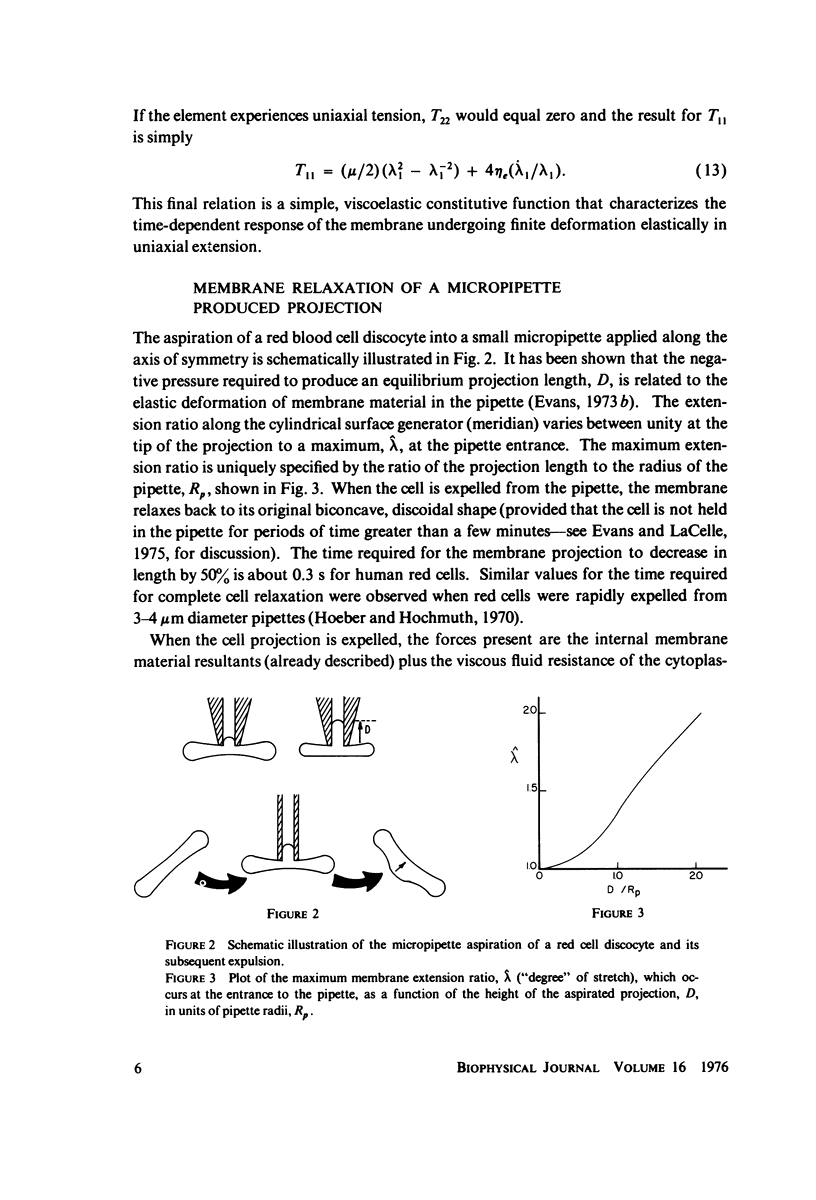
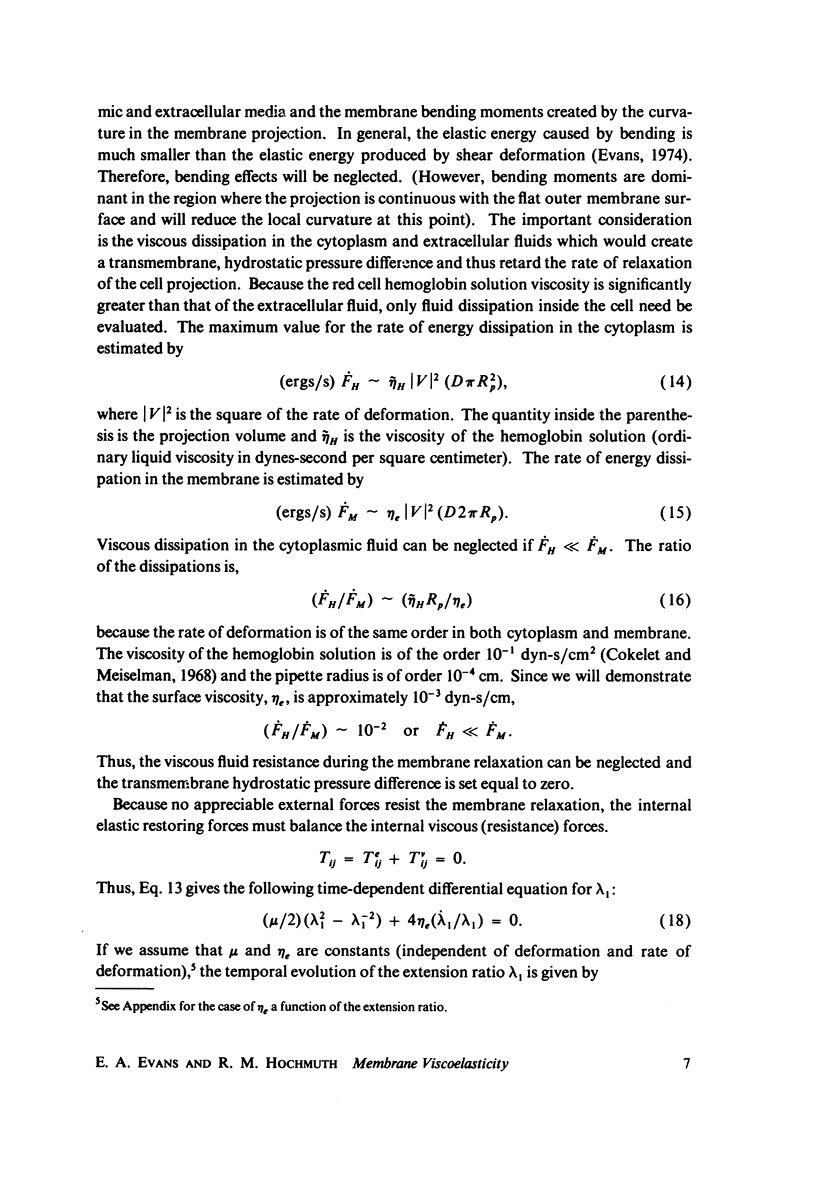
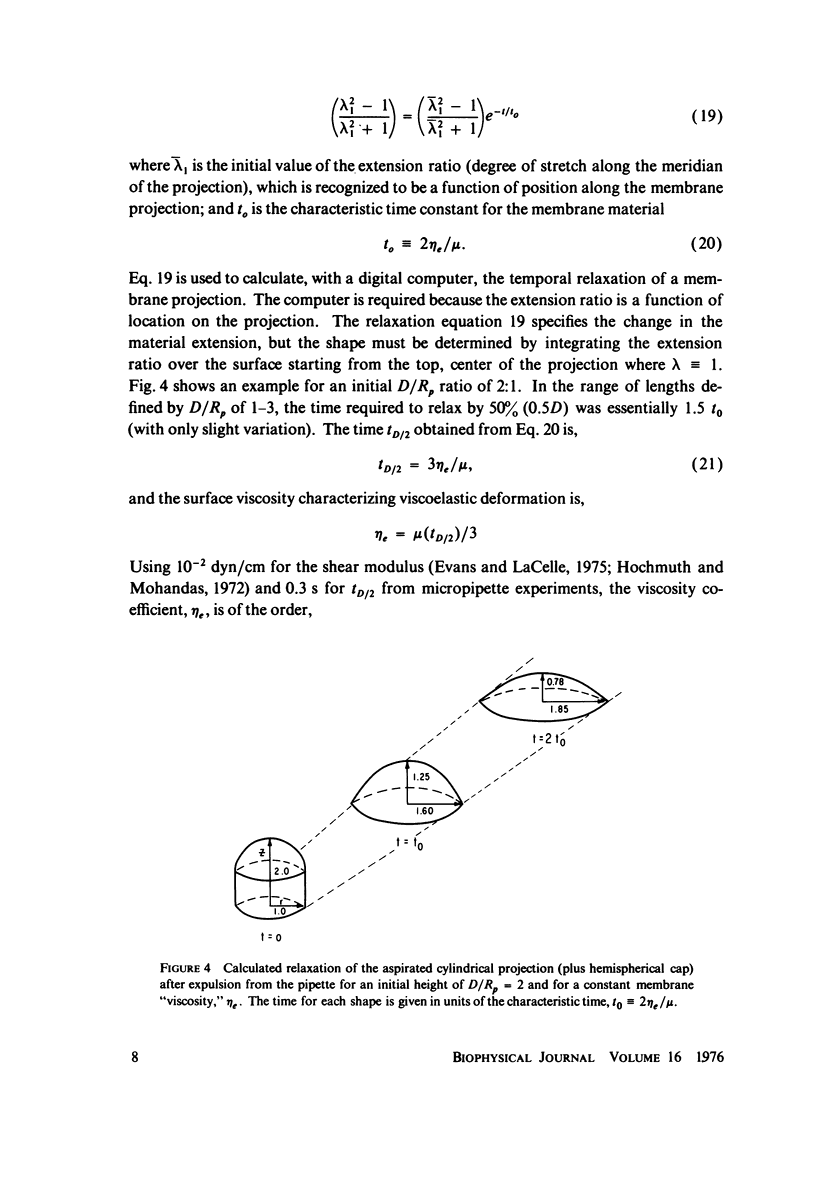
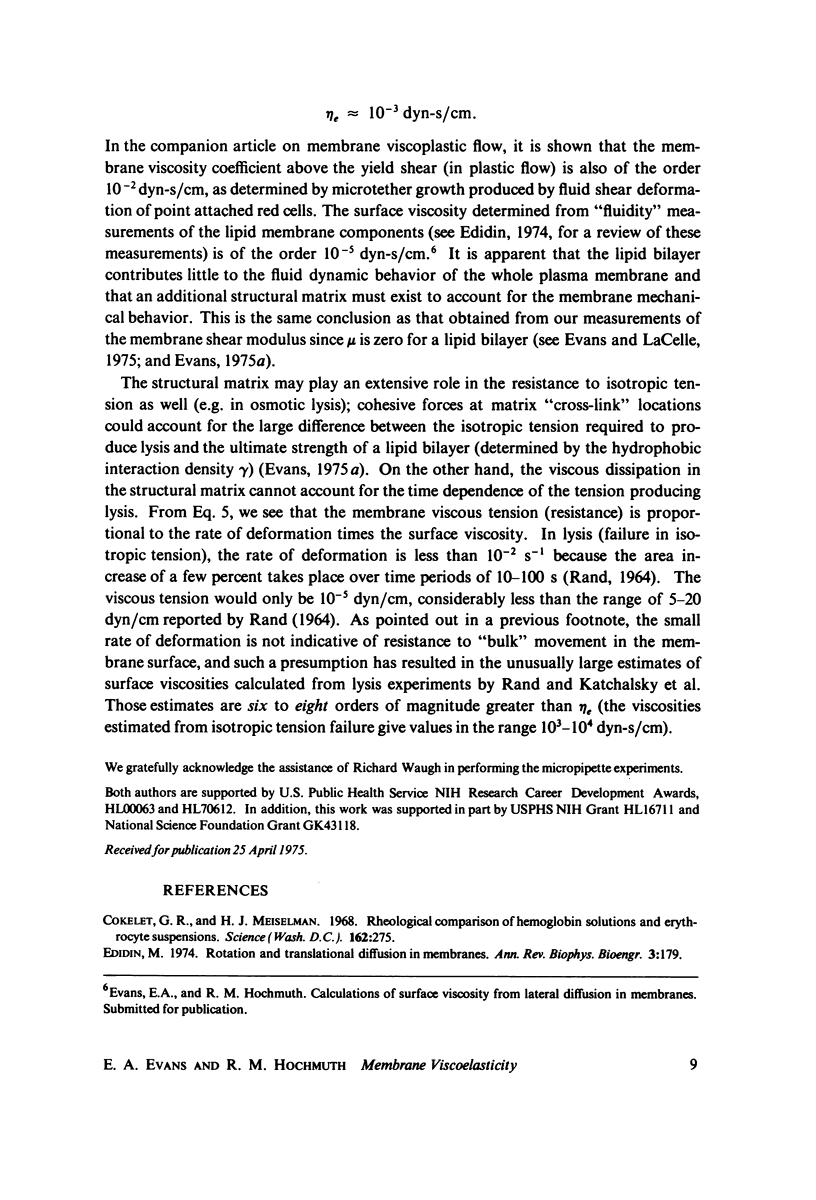
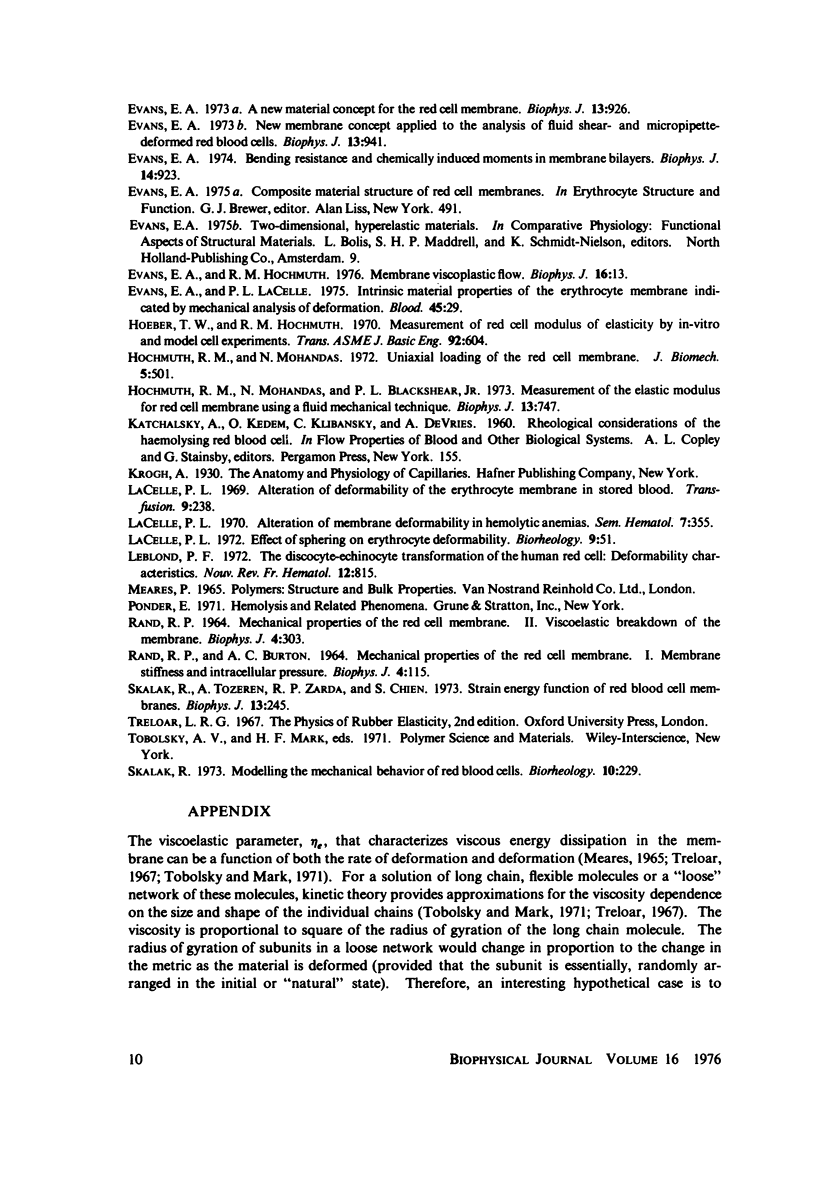
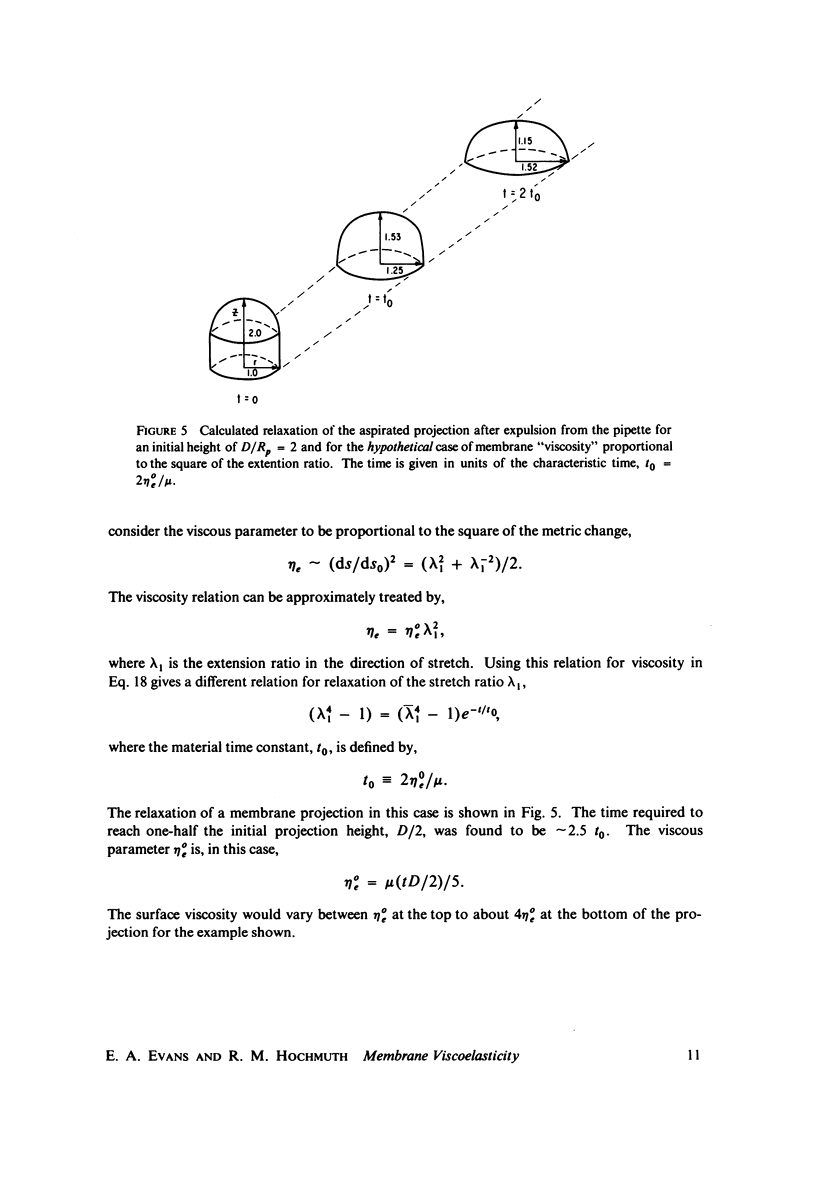
Selected References
These references are in PubMed. This may not be the complete list of references from this article.
- Cokelet G. R., Meiselman H. J. Rheological comparison of hemoglobin solutions and erythrocyte suspensions. Science. 1968 Oct 11;162(3850):275–277. doi: 10.1126/science.162.3850.275. [DOI] [PubMed] [Google Scholar]
- Edidin M. Rotational and translational diffusion in membranes. Annu Rev Biophys Bioeng. 1974;3(0):179–201. doi: 10.1146/annurev.bb.03.060174.001143. [DOI] [PubMed] [Google Scholar]
- Evans E. A. A new material concept for the red cell membrane. Biophys J. 1973 Sep;13(9):926–940. doi: 10.1016/S0006-3495(73)86035-7. [DOI] [PMC free article] [PubMed] [Google Scholar]
- Evans E. A. Bending resistance and chemically induced moments in membrane bilayers. Biophys J. 1974 Dec;14(12):923–931. doi: 10.1016/S0006-3495(74)85959-X. [DOI] [PMC free article] [PubMed] [Google Scholar]
- Evans E. A., Hochmuth R. M. Membrane viscoplastic flow. Biophys J. 1976 Jan;16(1):13–26. doi: 10.1016/S0006-3495(76)85659-7. [DOI] [PMC free article] [PubMed] [Google Scholar]
- Evans E. A., La Celle P. L. Intrinsic material properties of the erythrocyte membrane indicated by mechanical analysis of deformation. Blood. 1975 Jan;45(1):29–43. [PubMed] [Google Scholar]
- Evans E. A. New membrane concept applied to the analysis of fluid shear- and micropipette-deformed red blood cells. Biophys J. 1973 Sep;13(9):941–954. doi: 10.1016/S0006-3495(73)86036-9. [DOI] [PMC free article] [PubMed] [Google Scholar]
- Hochmuth R. M., Mohandas N., Blackshear P. L., Jr Measurement of the elastic modulus for red cell membrane using a fluid mechanical technique. Biophys J. 1973 Aug;13(8):747–762. doi: 10.1016/S0006-3495(73)86021-7. [DOI] [PMC free article] [PubMed] [Google Scholar]
- Hochmuth R. M., Mohandas N. Uniaxial loading of the red-cell membrane. J Biomech. 1972 Sep;5(5):501–509. doi: 10.1016/0021-9290(72)90007-3. [DOI] [PubMed] [Google Scholar]
- La Celle P. L. Alteration of deformability of the erythrocyte membrane in stored blood. Transfusion. 1969 Sep-Oct;9(5):238–245. doi: 10.1111/j.1537-2995.1969.tb04930.x. [DOI] [PubMed] [Google Scholar]
- LaCelle P. L. Alteration of membrane deformability in hemolytic anemias. Semin Hematol. 1970 Oct;7(4):355–371. [PubMed] [Google Scholar]
- LaCelle P. L. Effect of sphering on erythrocyte deformability. Biorheology. 1972 Jun;9(2):51–59. doi: 10.3233/bir-1972-9202. [DOI] [PubMed] [Google Scholar]
- Leblond P. The discocyte-echinocyte transformation of the human red cell: deformability characteristics. Nouv Rev Fr Hematol. 1972 Nov-Dec;12(6):815–824. [PubMed] [Google Scholar]
- RAND R. P., BURTON A. C. MECHANICAL PROPERTIES OF THE RED CELL MEMBRANE. I. MEMBRANE STIFFNESS AND INTRACELLULAR PRESSURE. Biophys J. 1964 Mar;4:115–135. doi: 10.1016/s0006-3495(64)86773-4. [DOI] [PMC free article] [PubMed] [Google Scholar]
- RAND R. P. MECHANICAL PROPERTIES OF THE RED CELL MEMBRANE. II. VISCOELASTIC BREAKDOWN OF THE MEMBRANE. Biophys J. 1964 Jul;4:303–316. doi: 10.1016/s0006-3495(64)86784-9. [DOI] [PMC free article] [PubMed] [Google Scholar]
- Skalak R. Modelling the mechanical behavior of red blood cells. Biorheology. 1973 Jun;10(2):229–238. doi: 10.3233/bir-1973-10215. [DOI] [PubMed] [Google Scholar]
- Skalak R., Tozeren A., Zarda R. P., Chien S. Strain energy function of red blood cell membranes. Biophys J. 1973 Mar;13(3):245–264. doi: 10.1016/S0006-3495(73)85983-1. [DOI] [PMC free article] [PubMed] [Google Scholar]


